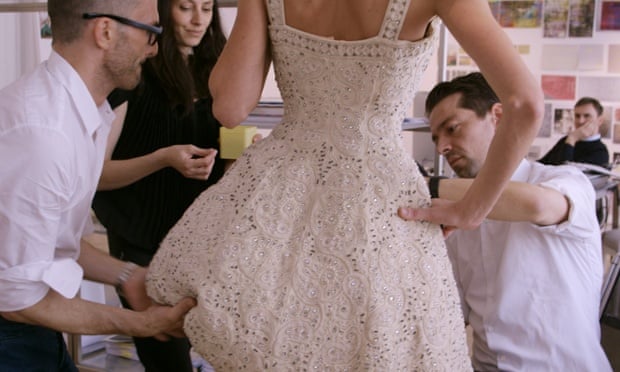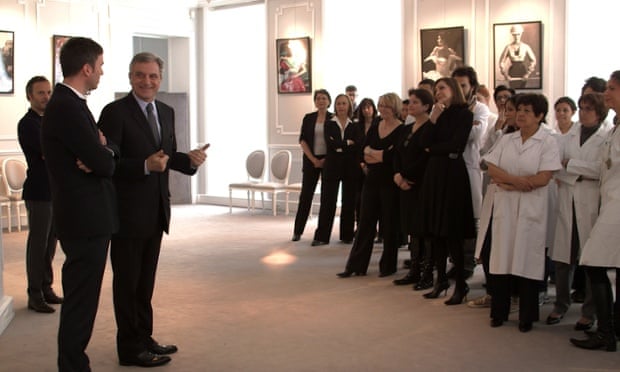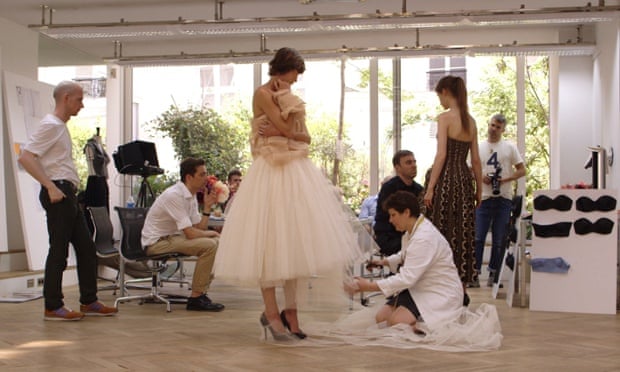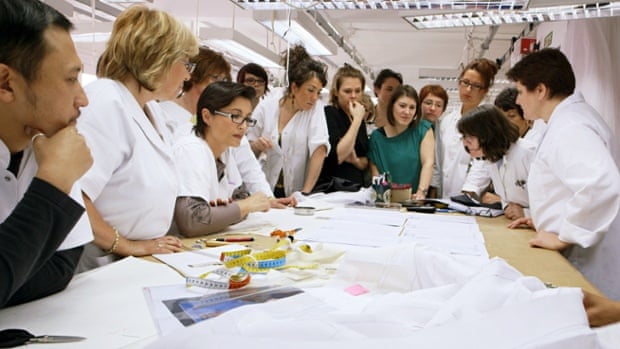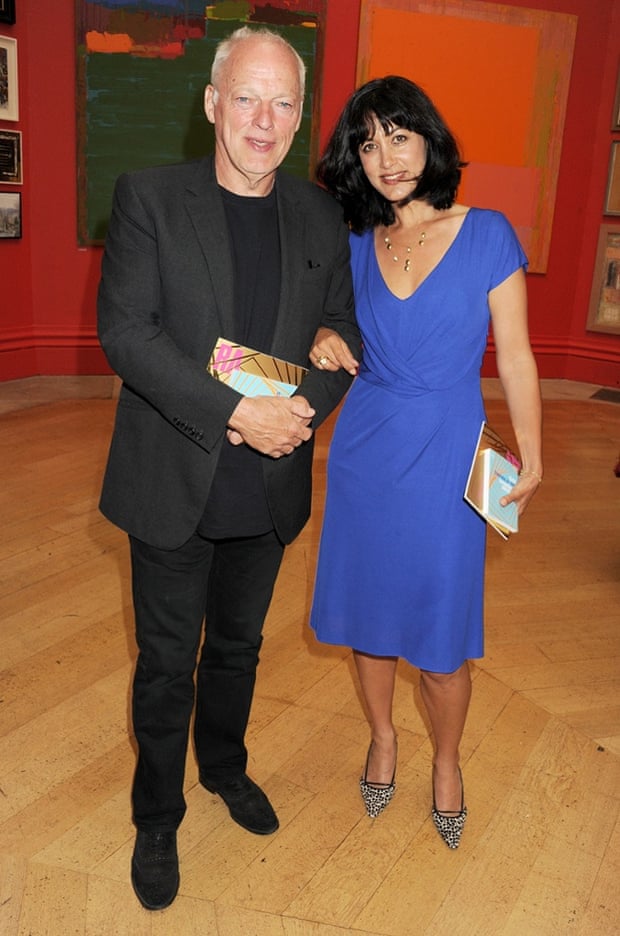
With only a few days before the gates open on the Glastonbury festival, Emily Eavis is pleased to see that the fields and hedgerows of her little corner of Somerset have been bathing in sunshine. The sky is deep, clear blue and the woman who holds the power at Worthy Farm can feel the excitement building. But with most of the setting up on the vast 1,000-acre site complete, Worthy Farm looks oddly naked. The 1,300 eco-friendly composting lavatories and the dozens of temporary stages are all in place, but the Vale of Avalon is still awaiting the sea of tents and 135,000 soon-to-be sunburned (or mud-caked) ticket holders, who will descend upon it from tomorrow morning.
"I certainly wouldn't call this moment the calm before the storm or anything like that," says Eavis, who has run the world-famous festival with her father, Michael, since 1999. "But we are nearly there with it. It's just the finishing touches now." Those finishing touches mean that a fleet of Land Rovers is constantly scurrying back and forth across the site and an army of workers are painting the last of the festival's trademark decorated bins and erecting the banners. On Friday, it also meant that Eavis, along with her husband, Nick Dewey, who helps her to run the day-to-day business of booking bands and supervise the construction of a temporary city the size of Oxford, had some last-minute "rejigging" of the Friday night line-up to oversee.
The Independent arrived at Worthy Farm – now complete with offices for 20 full-time staff – just as Eavis and Dewey were discussing the changes they need to make now that Florence and the Machine have stepped up to the headline slot, replacing the Foo Fighters after frontman Dave Grohl broke his leg. "We are probably just going to do a rejigging of what we've already got," she says, as Dewey leaves the room, phone in hand. "But it's going to be great. I'm so excited about Florence. The fact is that when we sell our tickets in October people don't know who is playing as we don't announce it until the spring. They had a window to return their tickets [in April], but this year very fewer people than last year took us up on that, which was amazing."
There's also the fact, she is quick to add, that "Florence is massive" and well deserving of her new headliner slot. "I think personally that when she walks on the stage she'll be the biggest star in the world. She's amazing live. She has all the right ingredients."
"We book bands here on those reasons, on the ingredients of a great performance, not on their record sales. But as it happens, Florence has been number one across the Atlantic and here. She's an amazing star and a massive performer. We've had much more risky headliners." Florence is also a female headliner, a species that is in short supply this summer as Britain's festivals have been attacked for failing to represent the female domination of the charts. "It's definitely a positive by-product," adds Eavis. "It's true that there are very few women headlining festivals this summer, and this helps that, I suppose. It's great."
For Eavis, though, Glastonbury is about more than the "headliners and band, bands, bands, bands". It has a turnover of more than £35m and a seasonal crew of 50,000, enabling her and her father to donate £2m to charity each year. Then there's the farm itself, which this year was voted Britain's best dairy farm by the Royal Association of British Dairy Farmers. In fact, the team around Emily and Michael still insist that Steve Kearle, the long-serving farm manager, not Michael or Emily, is the most important person on the site.
"I obviously get excited about the bands, because we work on those all year and we have fantastic headliners. But in all honesty, I get just as excited about the other performers and fantastic visual installations and sculpture by artists like Joe Rush," she says. "To me, the music is part of a massive picture, and that picture involves amazing circus, ballet, theatre, comedy and visual art. The artistic side is amazing here. You could go easily the entire festival without seeing a band."
This year, that less mainstream side of Glastonbury has grown even stronger. There are 1,500 performances in the Theatre and Circus field alone, says Eavis and a trio of secretive "baby spiders" will join the giant fire-breathing mechanical spider in the late-night area Arcadia. Arcadia is already loved by festival goers who flock to its dystopian avenues in the early hours of the morning, but she is coy about the spiders, only saying the "triplet" will be part of a "phenomenal" new nightly show.
Elsewhere on the site, Eavis says she is looking forward to performances from the Danza de los Voladores, a troupe of Mexican dancers who will help open the festival at King's Meadow tomorrow night. From the top of their 30ft poles they will perform a Mexican ritual ceremony that Eavis says will "wow" festival goers. There is also a new Tor View Lookout by the circus tent, and a new Temple in the Park viewing platform and real ale bar on the site's highest point above the Park Stage.
For Eavis these new sites are a reward for the festival's hardcore and most loyal fans who return every year to a new discovery. In recent years they have "embraced" the festival like never before, she says. By Thursday lunchtime, as many as 90 per cent of ticket holders will have already arrived, a full day before the music actually starts. This loyalty doesn't stop the yearly controversies, though, including a tax protest against U2 in 2011. This year the inevitable saga has been a 130,000-signature petition to prevent rapper Kanye West from performing at the festival. "We try not to feed the [online] frenzy," she says carefully. "That petition was started by a guy called Neil who had never been to Glastonbury. He's coming now. I'm not going to meet him, but he's very welcome and he can make a decision after the show. I think Kanye is going to be fantastic."
It's clear Eavis is somewhat bored of the faux outrage every time she and Dewey book a group that isn't four white men with guitars. "Complaining about Kanye at Glastonbury is like going to London as saying you are appalled that Miss Saigon is playing," she says. "In that case, go to Les Misérables instead… or the thousands of other shows."
There's also the question of Kanye West's lyrics, which are hardly what you'd describe as feminist-friendly. "Oh God," says Eavis. "If we censored the lyrics and views of people who performed we wouldn't have anyone. We wouldn't have had the Rolling Stones, or pretty much any of the headliners from the last 20 years." Not everyone will agree, but Eavis says she and her husband don't take a band's politics or lyrics into account. "It's rock and roll," she says. "The important thing is that they deliver the goods by making the crowd feel like they are part of something really spectacularly special."
Glastonbury is certainly a special experience, but each year some complain that with its vast security fence, celebrities in Hunter wellies and colonies of expensive yurts, it has lost some of its soul, the so-called Glastonbury spirit. This year the latest (unofficial) wheeze is a private jet service offering rides to the festival for £600, a development that Eavis says she would find funny if it didn't threaten to drown out Glastonbury's real message.
"I hadn't even heard about that," she responds. "It's like that hammering board game my boys have got. Things like this are popping up all the time, they have nothing to do with us and we try to knock them down. Corporations and business people keep coming up with these things, but we are not interested in them in the slightest."
In truth, the festival does have corporate tie-ins with the BBC, The Guardian and mobile firm EE, which provides 4G data coverage and charging facilities across the site, but Eavis says deals only get the "go ahead" if they help fund Glastonbury's donations to Water Aid, Oxfam and Greenpeace. "We give as close to £2m to charity as we can every year. That is our upmost priority," she says.
Eavis has been helping her father run the festival since she came home from university when her mother died in 1999. In reality, though, she's had "full control" of the reins for a decade and her father, Michael, is taking an increasingly small role. "Dad leaves Nick and I to handle most things now, so it doesn't feel like there is going to be dramatic handover moment or anything like that, because in a way it has already happened," she says. "A lot has changed for him. He didn't have these constant corporate approaches to deal with 20 years ago, or even 10 years ago, where we have media and corporate brands trying to cling on. He just doesn't understand it."
Earlier this year, Michael said his daughter was "cunning" in how she runs the festival, and keeps it true to its founding ethos. She laughs at this, but as if to prove her father's take on her, she quickly confirms that all three headliners for Glastonbury 2016 are already booked.
Are they guitar bands? "I can't answer that. It would give it away," she laughs. "Everybody has a band or guitars anyway, or nearly everybody." She's right to be secretive; the last thing she wants this weekend is another online petition on her hands.

